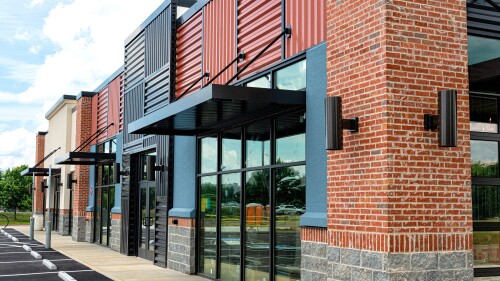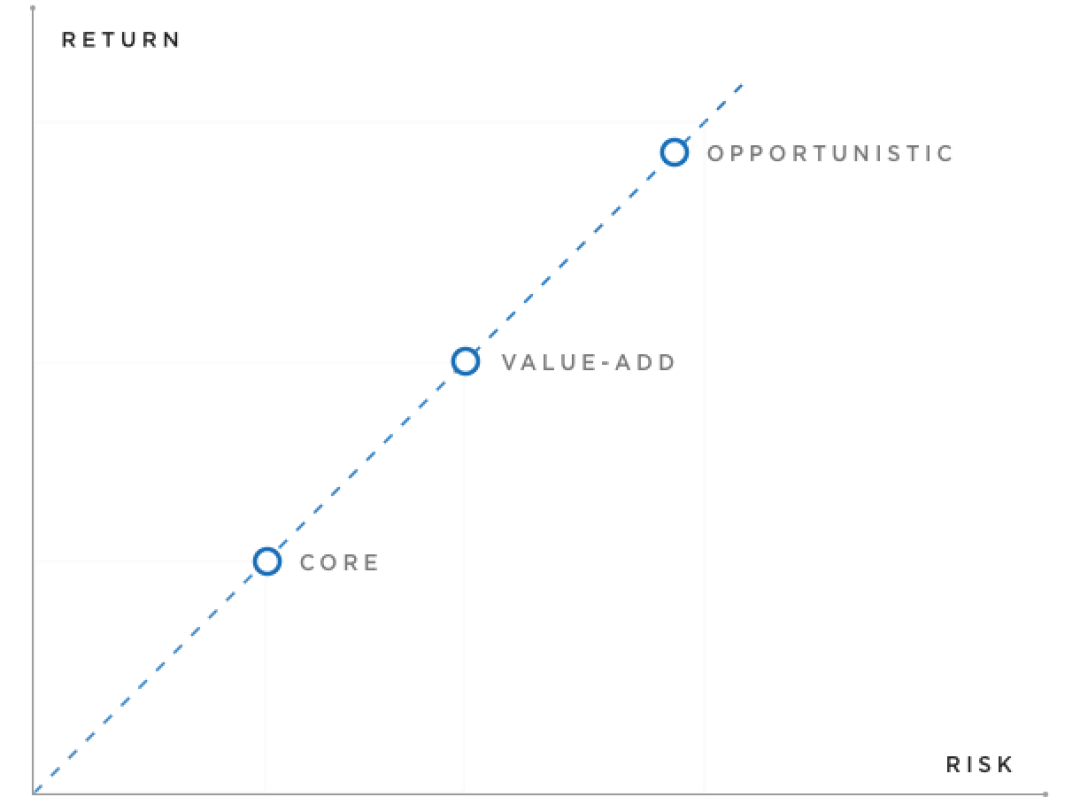Take Your Portfolio to
New Heights
The Power of Investing in Commercial Real Estate


Residential buildings that vary by location (urban or suburban) and may be further classified by structure: high-rise, mid-rise, or garden-style.
Considerations when Investing:
Economic drivers include demographic trends, home ownership, household formation rates, and local employment growth. Leases are typically short term and adjust quickly to market conditions. Generally considered to be one of the more defensive investment types within commercial real estate, though they are still subject to competitive pressures from newer construction.

Everything from small shopping centers, strip malls, and outlets to large power centers with a “category-dominating” anchor tenant.
Considerations when Investing:
Broadly influenced by the health of the overall economy including employment growth, the region’s economic focus, and demand for office space. More local factors include the property location and its traffic flow; population demographics; and local household incomes and buying patterns. Leases also often have long terms, which means that after a while lease rates may lag behind current market rates. Step ups in lease rates may need to wait until lease expirations.

Range from high-rise multi-tenant structures in city business districts to mid-rise single-tenant buildings in suburban areas.
Considerations when Investing:
Rents and valuations are influenced by employment growth and a region’s economic focus. Individualized tenant improvements are usually not very involved, but credit quality of tenants is key; re-leases of office space typically require some lead time to sign, finalize, and execute. Office properties often have longer-term leases that can lag behind current market lease rates, so that significant “step-ups” or “step-downs” of rental rates may occur when leases expire.

Manufacturing facilities, warehouse and distribution centers, research & development (R&D) properties and flex-space.
Considerations when Investing:
Manufacturing and R&D properties tend to be build-to-suit buildings that can be difficult to “re-tenant” without extensive modifications, while warehouses and distribution centers can be more generic buildings. Industrial properties are also influenced less by local job growth more than by larger economic drivers such as global trade growth (imports and exports) and corporate inventory levels. As with office buildings and retail centers, industrial property leases tend to have long terms, so that over time lease rates can fall behind “market.”

Self-storage facilities, mobile home parks, student housing and hospitality.
Considerations when Investing:
Key drivers include demographic trends, the state of the national economy in general, and large macroeconomic drivers such as supply/demand.

A well-balanced commercial real estate portfolio may include some or even all of these different investment strategies.
The way an investor owns real estate can be just as important as the underlying real estate and investment strategy. Considerations need to be made for taxes, property operations, potential tenant issues, diversification and individual financial responsibility.
2 There is no guarantee that the RealtyMogul Income REIT, LLC’s (“Income REIT”) or RealtyMogul Apartment Growth REIT, Inc.’s (“Apartment Growth REIT”) members or shareholders, respectively, will receive a distribution. Distributions have been paid from sources other than cash flow from operations, including net proceeds from the offerings, cash advances by RM Adviser, LLC, manager of the Income REIT and Apartment Growth REIT (the “Manager”), cash resulting from a waiver of fees or reimbursements due to Manager, borrowings and the issuance of additional securities. The Manager of Income RIET or the Board of Directors of Apartment Growth REIT may in the future declare lower distributions or no distributions at all for any given period.
3 Investors should carefully consider the most appropriate risk tolerance for their personal financial situation. Diversification and rebalancing strategies do not ensure a profit and do not protect against losses in declining markets. All investments involve some degree of risk. It’s important that you understand that you could lose some or all of the money you invest.